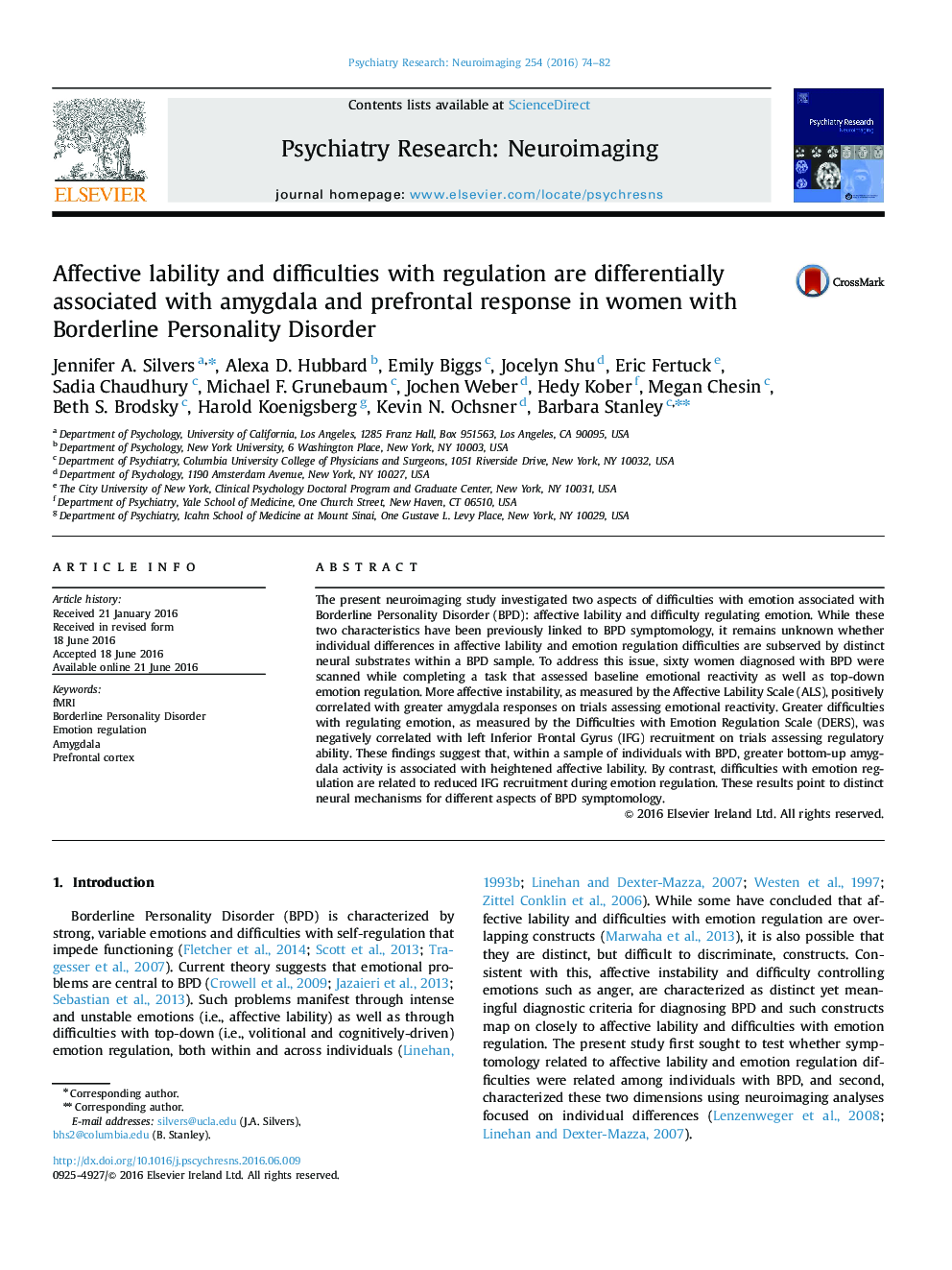| Article ID | Journal | Published Year | Pages | File Type |
|---|---|---|---|---|
| 335238 | Psychiatry Research: Neuroimaging | 2016 | 9 Pages |
•Borderline Personality Disorder (BPD) is characterized by emotional problems.•Affective lability predicts greater amygdala responses to aversive stimuli in BPD.•Difficulties with emotion regulation predict less prefrontal recruitment in BPD.•These results identify distinct neural signatures of BPD symptomology.
The present neuroimaging study investigated two aspects of difficulties with emotion associated with Borderline Personality Disorder (BPD): affective lability and difficulty regulating emotion. While these two characteristics have been previously linked to BPD symptomology, it remains unknown whether individual differences in affective lability and emotion regulation difficulties are subserved by distinct neural substrates within a BPD sample. To address this issue, sixty women diagnosed with BPD were scanned while completing a task that assessed baseline emotional reactivity as well as top-down emotion regulation. More affective instability, as measured by the Affective Lability Scale (ALS), positively correlated with greater amygdala responses on trials assessing emotional reactivity. Greater difficulties with regulating emotion, as measured by the Difficulties with Emotion Regulation Scale (DERS), was negatively correlated with left Inferior Frontal Gyrus (IFG) recruitment on trials assessing regulatory ability. These findings suggest that, within a sample of individuals with BPD, greater bottom-up amygdala activity is associated with heightened affective lability. By contrast, difficulties with emotion regulation are related to reduced IFG recruitment during emotion regulation. These results point to distinct neural mechanisms for different aspects of BPD symptomology.
